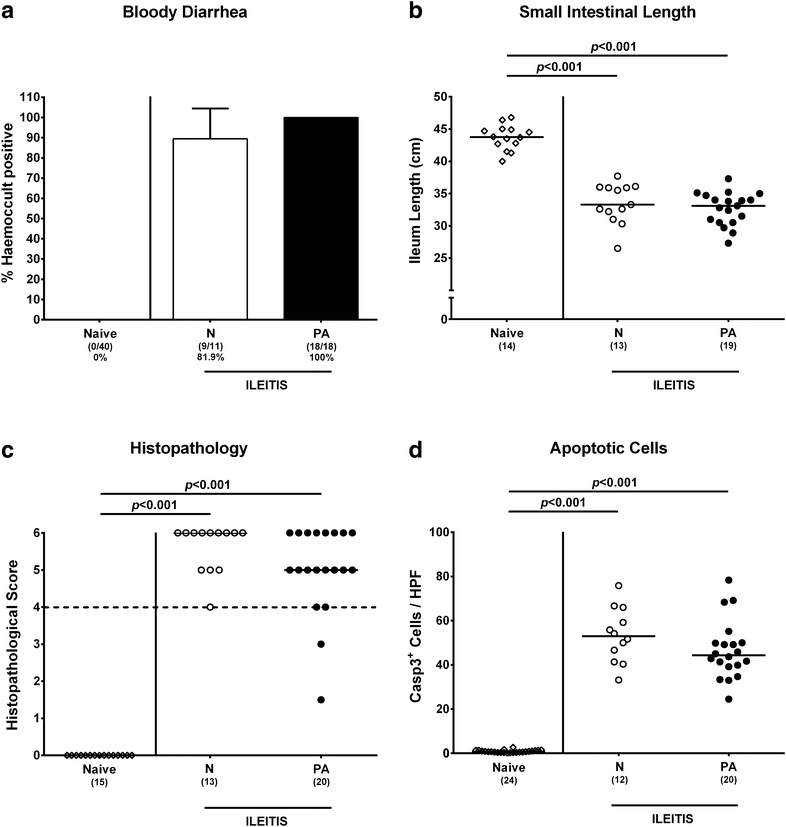Fig. 4.

Clinical, macroscopic and microscopic sequelae in multidrug resistant P. aeruginosa infected human microbiota-associated mice suffering from acute ileitis. Human microbiota-associated mice were perorally challenged with T. gondii ME49 to induce acute ileitis and either additionally infected with MDR P. aeruginosa 3 days following ileitis induction (PA; filled bar or circles) or not (N; open bar or circles). Naive mice served as negative controls (open diamonds). Clinical, macroscopic and microscopic intestinal changes were assessed at day 7 post ileitis induction: a Abundance of bloody diarrhea was determined in fecal samples by the Guajac (Haemoccult) method (in %). Means, standard deviations and numbers of fecal blood positive mice out of the total numbers of animals (in parentheses) are indicated. b Absolute small intestinal lengths were measured (in cm) and c histopathological changes were determined in H&E stained ileal paraffin sections applying a standardized scoring system. Scores ≥4 (dotted line) indicate severe inflammation (with necrosis). d The average numbers of apoptotic cells (positive for caspase 3; Casp3+) from at least six high power fields (HPF, ×400 magnification) per animal were determined microscopically in immunohistochemically stained ileal paraffin sections. Numbers of animals (in parentheses), medians and significance levels (p values) determined by Kruskal–Wallis test or ordinary one-way ANOVA are indicated. Data shown were pooled from three independent experiments
